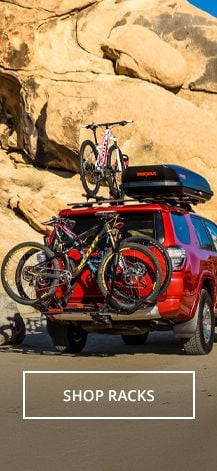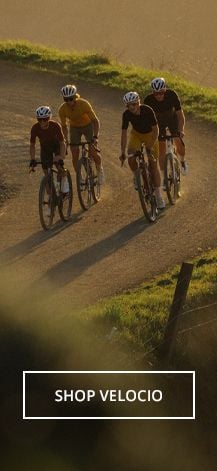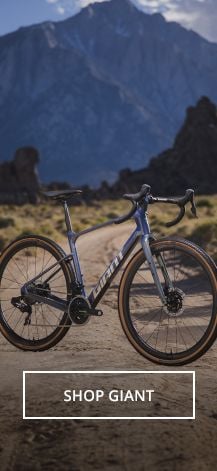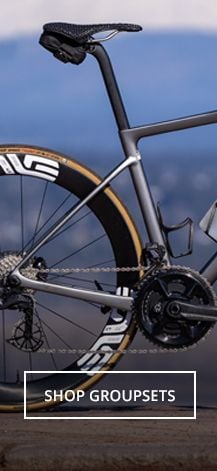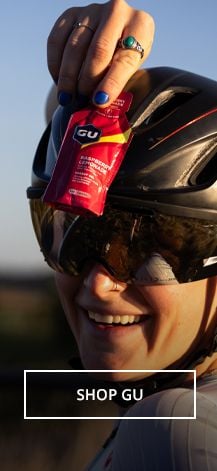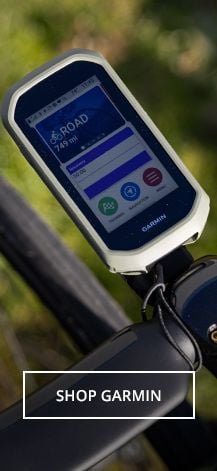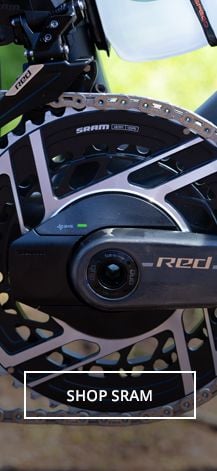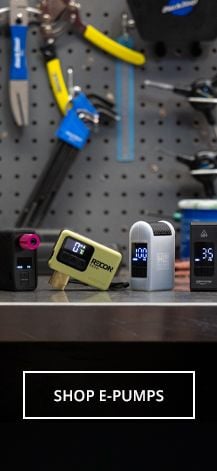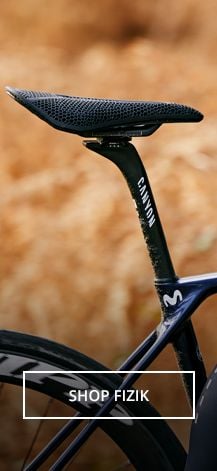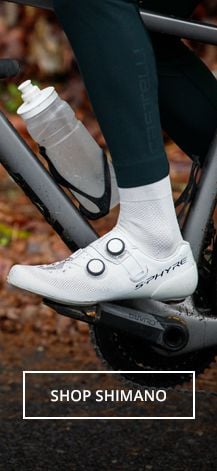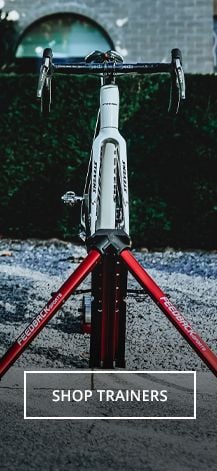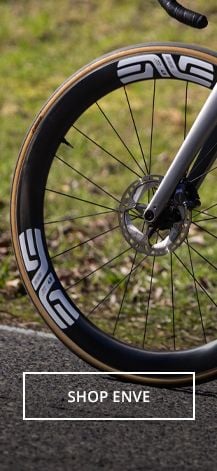Tube Types
Valve Types—Presta and Schrader
 There are two standard valve types used for bicycle tubes. These are called Presta and Schrader (sometimes spelled Schraeder or Shrader). You might recognize Schrader valves from your car's tires, as this is the type used for automobile tires; they're also commonly found on lower-priced bicycles in the United States. Presta valves are commonly used on bicycles sold in Europe and on high-end bicycles everywhere.
There are two standard valve types used for bicycle tubes. These are called Presta and Schrader (sometimes spelled Schraeder or Shrader). You might recognize Schrader valves from your car's tires, as this is the type used for automobile tires; they're also commonly found on lower-priced bicycles in the United States. Presta valves are commonly used on bicycles sold in Europe and on high-end bicycles everywhere.
Presta valves are lighter and more aerodynamic than Schrader valves. Their narrower profile also allows them to fit more easily inside the narrow rims found on road bikes. Since Presta valves can be locked closed, they are more resistant to leaking than Schrader valves when tires are pumped up to high pressures. For these reasons, they're used on all tubular (sew-up) tires, and, as we mentioned, they are used with high-performance bicycles everywhere.
Presta valves do have a couple of disadvantages. Since the valve release is exposed, it's easier to knock it as you remove the pump head, releasing pressure from the tube. Presta valve stems are also slightly more fragile than Schrader stems.
Overall, we strongly prefer Presta valve tubes and recommend them exclusively, though we do sell some Schrader tubes as well. Presta tubes can be used as replacements for both Presta and Schrader tubes (see below), and they work better with most bicycle pumps and inflators.
Some Presta tubes come with removable valve cores, which can be useful for adding extenders or using sealant (see below). Our Continental tubes, like the Continental Race Road Tube, all feature removable valve cores.
Tube Materials—Butyl and Latex
 Most bicycle tubes are made of butyl rubber. Butyl is relatively low cost and holds air pressure for a long time. Butyl tubes come in various "weights," or wall thicknesses. Standard weight tubes, like the Kenda 700c Tube, usually weigh about 95 grams for a normal road tube (700c x 23mm). Lightweight tubes (e.g. the Kenda Superlight 700c Road Tube) weigh about 10 grams less, and ultralight tubes (e.g. the Michelin A1 Aircomp Ultra Light Tube) 10 grams less than that. These lighter weight tubes are made with tighter manufacturing tolerances, so even though they've got less material, they'll hold air reliably.
Most bicycle tubes are made of butyl rubber. Butyl is relatively low cost and holds air pressure for a long time. Butyl tubes come in various "weights," or wall thicknesses. Standard weight tubes, like the Kenda 700c Tube, usually weigh about 95 grams for a normal road tube (700c x 23mm). Lightweight tubes (e.g. the Kenda Superlight 700c Road Tube) weigh about 10 grams less, and ultralight tubes (e.g. the Michelin A1 Aircomp Ultra Light Tube) 10 grams less than that. These lighter weight tubes are made with tighter manufacturing tolerances, so even though they've got less material, they'll hold air reliably.
Since innertube weight is rotational weight at the periphery of the wheel, saving a few grams actually does make a difference in how fast your wheels can accelerate. If you're a racer or an avid recreational cyclist who likes to ride fast, you'd do well to consider the lighter-weight tubes. If you're not concerned about weight, standard weight tubes will be a little more puncture resistant and quite a bit cheaper.
If you really don't care about weight and would prefer a little extra puncture protection, one of your options is a thorn-resistant heavy-weight tube like the Kenda Thorn Resistant Schrader Tube, with extra-thick butyl to keep out road hazards.
 The most expensive tubes, like the ultra-light Challenge Latex Road Tube, are made using latex instead of butyl. Latex has more elasticity and less stiffness than butyl, making for a smoother ride and improved efficiency. Most of the energy lost due to "rolling resistance" is due to the heat loss as the tire and tube deform as the wheel rotates. Since latex isn't as stiff as butyl, less heat is lost when a latex tube is used. The reduction in energy loss is subtle, but when you're racing, every little bit counts.
The most expensive tubes, like the ultra-light Challenge Latex Road Tube, are made using latex instead of butyl. Latex has more elasticity and less stiffness than butyl, making for a smoother ride and improved efficiency. Most of the energy lost due to "rolling resistance" is due to the heat loss as the tire and tube deform as the wheel rotates. Since latex isn't as stiff as butyl, less heat is lost when a latex tube is used. The reduction in energy loss is subtle, but when you're racing, every little bit counts.
Latex tubes are also lighter than butyl tubes, less prone to pinch flats, and actually more resistant to punctures. So why not use latex? Well, it's considerably more expensive, and it also doesn't maintain pressure as well. With latex tubes, you need to pump up your tires everyday. They also tend to flat more dramatically and can't be patched with a patch kit.
Tube Sizing
Butyl and latex are both fairly elastic, so you don't need to buy a tube that's exactly the correct size for your tire. Tubes are labeled with a size range that they'll fit, and even then, there's usually a bit of extra leeway. For example, many road tubes are labeled "700c x 18-23." These tubes will fit a standard 700c x 23mm tire or a 700c x 20mm tire, but they can also be easily used with a 700c x 25mm tire or even a 27" x 1" tire. Using a tube in a tire slightly bigger than indicated just means the rubber will be stretched a little thinner than it would be in a narrower tire.
If you want thicker rubber, you can use a slightly bigger tube—for example, you might choose a tube labeled 700c x 28-32 for use with a 700c x 25mm tire. We don't usually recommend this, though; in our opinion, the minimal added puncture resistance doesn't offset the added weight. It's also easier to make a mistake when installing the tube and end up with a pinch flat, defeating the purpose entirely!
We offer tubes in all sorts of sizes. We carry a wide range of road tubes (in 700c and 650c sizes) and mountain tubes (in 26" and 29" sizes), plus plenty of tubes in unusual sizes including 12", 14", 16", 18", 20", and 24". Whatever you're looking for, chances are you can find it here!
Threaded vs. Smooth Valves
Presta valves come in both threaded and smooth valve varieties. The threaded kind can be seen in our photo above; these have threads that extend to the bottom of the tube. Threaded valve stems usually come with a valve nut—a knurled metal ring that threads onto the valve stem. The valve nut is installed over the valve stem after the stem is inserted through the wheel rim, and it helps keep the stem stable and perpendicular to the rim while the tube is inflated, protecting the valve stem from rubbing.
Smooth valve stems don't have this nut, so you need to take a little extra care when pumping up a tube with a smooth valve, making sure that the valve stem doesn't rub back and forth against the rim. Some people prefer smooth valve stems because it's easier to remove the pump.
If you do use a valve nut, take care not to tighten it too much, or it will be difficult to remove when you have to change the tube! Over-tightening can also put pressure on the valve/tube junction where it passes through the rim, which can cause a flat or a failure of the tube.
Valve Length
 Many tubes come in several different valve lengths to accommodate different wheel profiles. Most bicycle wheels are served just fine by 32-33mm valves, but higher-end bicycles are often equipped with "aero" wheels. These wheels have a higher rim profile, necessitating a longer valve stem. You need to have enough valve sticking through the rim to easily attach your pump head for inflation. With most pumps and inflators, half an inch should be enough.
Many tubes come in several different valve lengths to accommodate different wheel profiles. Most bicycle wheels are served just fine by 32-33mm valves, but higher-end bicycles are often equipped with "aero" wheels. These wheels have a higher rim profile, necessitating a longer valve stem. You need to have enough valve sticking through the rim to easily attach your pump head for inflation. With most pumps and inflators, half an inch should be enough.
That said, the only real downsides of using a valve that's "too long" are marginally increased weight and aerodynamic drag and maybe slightly less polished aesthetics. If you're worried about having a too-short valve stem, or don't know how long yours needs to be, err on the side of longer.
Mid-length valves come in 48-52mm lengths, and the longest run 60-80mm. If you have a very deep rim profile, even the longest valve stems may not be adequate. For these situations, we sell valve extenders that screw onto your standard Presta valve for additional length. Use a Continental Valve Extension, for example. If you use valve extenders, it's important that you use a tube with a removable valve core, so you can remove it, add the extension, and put the core back in.
Replacing a Schrader Tube With a Presta Tube
 It's relatively easy to use a Presta tube in place of a Schrader tube. A Presta valve has a smaller diameter than a Schrader valve, so a Presta valve will easily fit in a rim hole drilled for a Schrader valve. However, there's some risk that the valve will move around in the larger hole, possibly damaging the valve and causing a flat. An easy way to prevent this is to use Wheels Mfg Presta Stem Savers, which slide over Presta valves and fit snugly into the larger rim hole. The stem savers should be installed on the valve stem before it's inserted through the rim.
It's relatively easy to use a Presta tube in place of a Schrader tube. A Presta valve has a smaller diameter than a Schrader valve, so a Presta valve will easily fit in a rim hole drilled for a Schrader valve. However, there's some risk that the valve will move around in the larger hole, possibly damaging the valve and causing a flat. An easy way to prevent this is to use Wheels Mfg Presta Stem Savers, which slide over Presta valves and fit snugly into the larger rim hole. The stem savers should be installed on the valve stem before it's inserted through the rim.
It is not possible to replace a Presta tube with a Schrader tube, since rims drilled for Presta valves will have smaller holes, in which thicker Schrader valves will not fit.
Using a Schrader Pump With a Presta Tube
If you're used to using a conventional Schrader pump or air compressor (perhaps at the local gas station) to pump up your tires, you can still do this with Presta valves (although we don't really recommend it!). An adapter like the Genuine Innovations Alloy Presta Valve Adapter makes it easy—just screw it on to the end of the valve stem.
Tire Sealants and Slime Tubes
 Tire sealants are liquids that are put inside tubes (and tubular and tubeless tires) to seal small punctures almost instantly. When a puncture occurs in a sealant-filled tube, the compressed air inside the tube forces the sealant through the hole at high velocity. When it contacts the low-pressure air, the sealant coagulates to form a seal. For punctures of up to 2mm or so, which includes most punctures caused by glass, thorns, wires, and small tacks, sealants are very effective.
Tire sealants are liquids that are put inside tubes (and tubular and tubeless tires) to seal small punctures almost instantly. When a puncture occurs in a sealant-filled tube, the compressed air inside the tube forces the sealant through the hole at high velocity. When it contacts the low-pressure air, the sealant coagulates to form a seal. For punctures of up to 2mm or so, which includes most punctures caused by glass, thorns, wires, and small tacks, sealants are very effective.
Most sealants are made for use with tubular and tubeless tires, but Slime Tube Sealant is optimized for standard butyl tubes. Unfortunately, in order to install it in a tube, a removable valve core is required. Some, but not all, Presta tubes have removable valve cores. To solve this problem, Slime sells Slime Self-Sealing Presta Tubes that come with sealant pre-installed. It's also possible to insert sealant in a tube without a removable core by cutting a small hole in the tube, adding sealant, and then sealing the hole with a normal tube patch.
Tire Liners
While we're on the subject, here's one more way to minimize flatting: tire liners. These are strips of Kevlar or plastic that are inserted in the tire between the tread and the tube, adding an extra layer of protection to keep road hazards from getting all the way to the tube and causing a puncture. Tire liners do reduce flatting, but most foreign objects that can work their way through the tire casing will eventually work their way through a tire liner, too. Tire liners help best with larger objects such as thorns that don't embed themselves in the tire. The Mr. Tuffy Standard Weight Tire Liner is popular and comes in sizes to fit just about any tire.
If you have any questions we haven't answered in this article, or just want advice about what tube would best suit your needs, don't hesitate to give us a call at (503) 917-0156 or email us at [email protected]!

